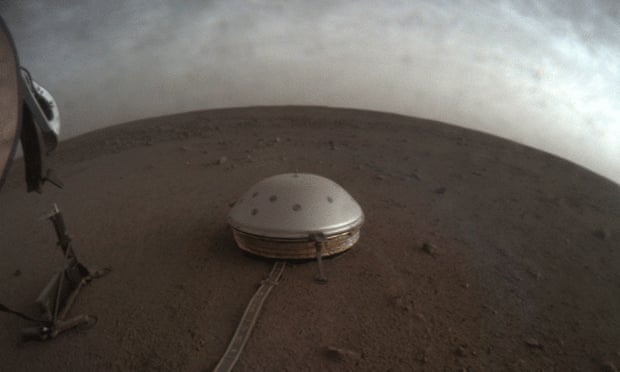Analysis of marsquakes captured since probe landed in 2018 shows the Martian crust is between 12 and 23 miles thick
Source: The Guardian
Nasa’s InSight lander has revealed the depth of Mars’s crust and the size of its central core by using data from dozens of marsquakes captured since the probe landed in 2018.
The Seismic Experiment for Interior Structure (SEIS) is a dome-shaped instrument that sits on the surface of Mars and can pick up seismic events hundreds or even thousands of miles away. Since its deployment, the mission has recorded 733 distinct marsquakes, about 35 of which were used for the current work. All quakes registered between magnitudes 3 and 4.
Their analysis shows that the Martian crust is between 12 and 23 miles (20-37km) thick. Below this is the mantle, which extends about 970 miles down to the Martian core, which has been revealed to have a radius of 1,137 miles.
Earth’s crust is also about 22 miles thick but our planet is 1.8 times larger than Mars. In terms of percentages, the Martian mantle and core are similar to the Earth’s at around 45% and 54% of the planet’s radius respectively.
Mars is only the third celestial object, after Earth and the moon, to have these measurements made. A key finding is that the Martian core is still molten; most scientists had assumed it would be solid.
Source: The Guardian

































Leave a Comment
You must be logged in to post a comment.